Chen et al. present a filament conductivity change mechanism in memristive devices with all ohmic electrodes, allowing for advanced functionalities and more effective emulation of the metaplasticity concept in neuroscience.
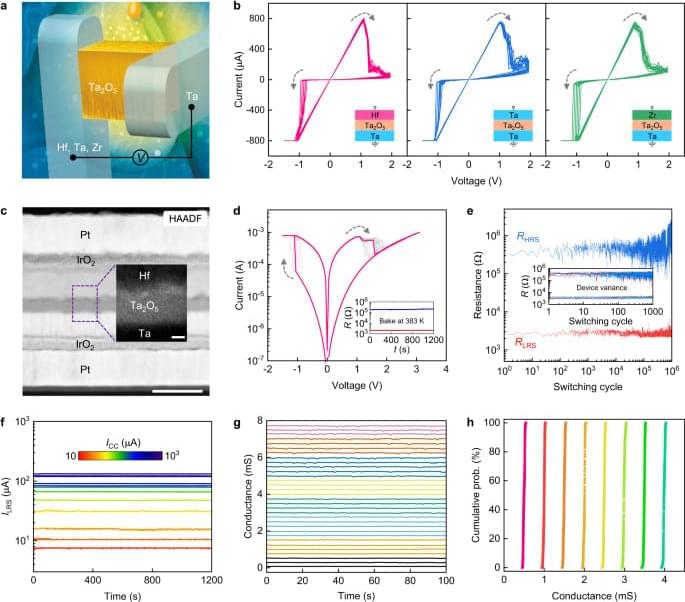


When I’m birdwatching, I have a particular experience all too frequently. Fellow birders will point to the tree canopy and ask if I can see a bird hidden among the leaves. I scan the treetops with binoculars but, to everyone’s annoyance, I see only the absence of a bird.
Our mental worlds are lively with such experiences of absence, yet it’s a mystery how the mind performs the trick of seeing nothing. How can the brain perceive something when there is no something to perceive?
For a neuroscientist interested in consciousness, this is an alluring question. Studying the neural basis of ‘nothing’ does, however, pose obvious challenges. Fortunately, there are other – more tangible – kinds of absences that help us get a handle on the hazy issue of nothingness in the brain. That’s why I spent much of my PhD studying how we perceive the number zero.
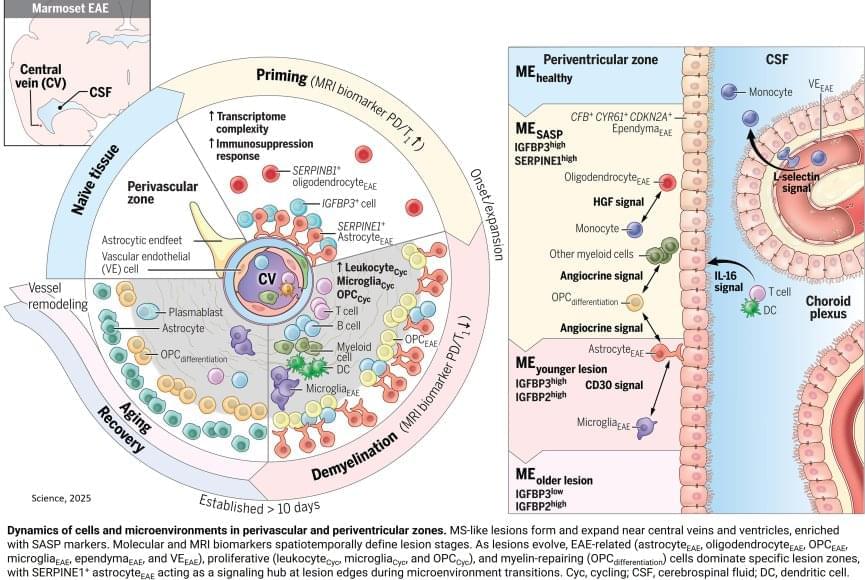
To mimic the conditions of the human brain, the researchers opted not to use a mouse model for MS, instead advancing a model that uses the marmoset, a nonhuman primate. Compared to mouse brains, marmoset and human brains have a higher ratio of white matter (the “wires” of the brain) to gray matter (neuronal cell bodies). The marmoset model creates multiple lesions that closely resemble those seen in human MS and that can be tracked in real time using MRI imaging. Because these lesions can be induced experimentally, the model offers a look at the earliest stages of inflammation and immune responses that lead to MS-like demyelination.
One key player identified was a specific type of astrocyte, one of the support cell types in the brain, that turns on a gene called SERPINE1 or plasminogen activator inhibitor-1 (PAI1). They found SERPINE1-expressing astrocytes in vulnerable brain borders before visible damage occurs, clustering near blood vessels and the fluid-filled ventricles of the brain and signaling future areas of lesion development. These astrocytes also appeared to influence the behavior of other cells near the lesion area, including the ability of immune cells to enter the brain and contribute to inflammation, as well as the precursor cells involved in myelin repair.
Given that SERPINE1-expressing astrocytes accumulated at the edges of growing lesions, where damage happens but healing also begins, their potential dual role in coordinating signals that could lead to either tissue repair or further damage was an unexpected wrinkle that will require further study. It’s possible that the earliest responses could be a part of a protective mechanism that becomes overwhelmed as the injury progresses. It’s also possible that the same mechanism could itself become disease-causing.
Using an animal model of multiple sclerosis (MS), researchers have created a four-dimensional brain map that reveals how lesions similar to those seen in human MS form. These findings, published in Science, provide a window into the early disease state and could help identify potential targets for MS treatments and brain tissue repair.
The researchers combined repeated MRI imaging with brain-tissue analysis, including gene expression, to track the onset and development of MS-like lesions. They uncovered a new MRI signature that can help detect brain regions at risk for damage weeks before any visible lesions occur. They also identified “microenvironments” within affected brain tissue based on observed patterns of neural function, inflammation, immune and support cell responses, gene expression, and levels of damage and repair.
“Identifying the early events that occur after inflammation and teasing apart which are reparative versus which are damaging, can potentially help us identify MS disease activity sooner and develop treatments to slow or stop its progression,” said the author.
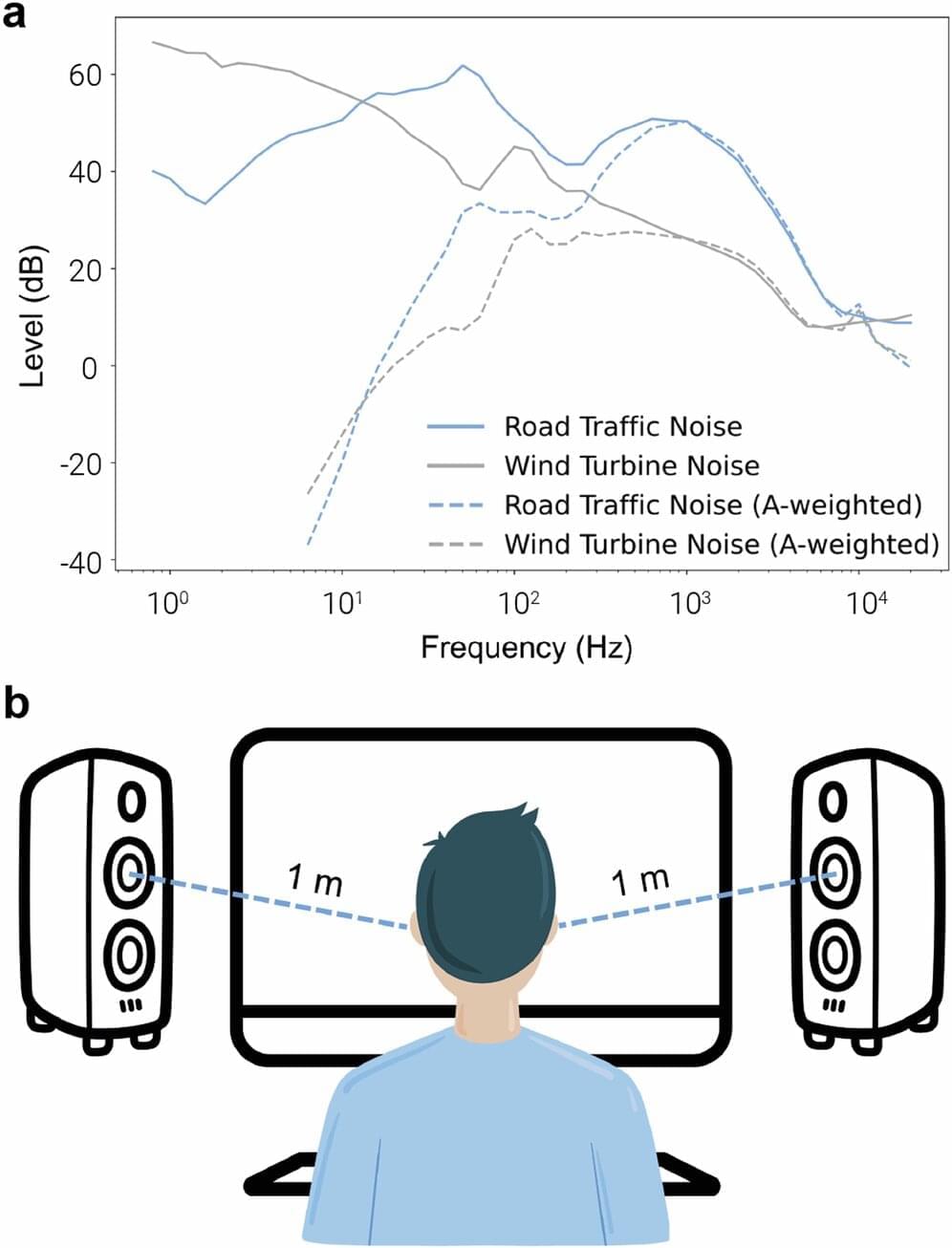
A team of cognitive neuroscientists and acoustic engineers at Adam Mickiewicz University, in Poland, has found no evidence that wind turbine noise causes mental impairment. In their study, published in the journal Humanities and Social Sciences Communication, the group conducted experiments exposing human volunteers to various noises and measured a range of impacts.
Over the past several years, several groups and individuals around the world, most particularly in the U.S., have conceived of the idea of something called “wind turbine syndrome”—a theory that suggests noise from windmills can cause mental illness, or other health problems such as cancer. To date, such claims have not been backed up by research or any other type of proof. In this new effort, the research team in Poland sought to find out if there is any merit to the theory.
The researchers recruited 45 students at a local university who listened to various noises while wearing devices that measured their brainwaves. The researchers intentionally chose young volunteers because prior research has shown they are more sensitive to noise than older people.
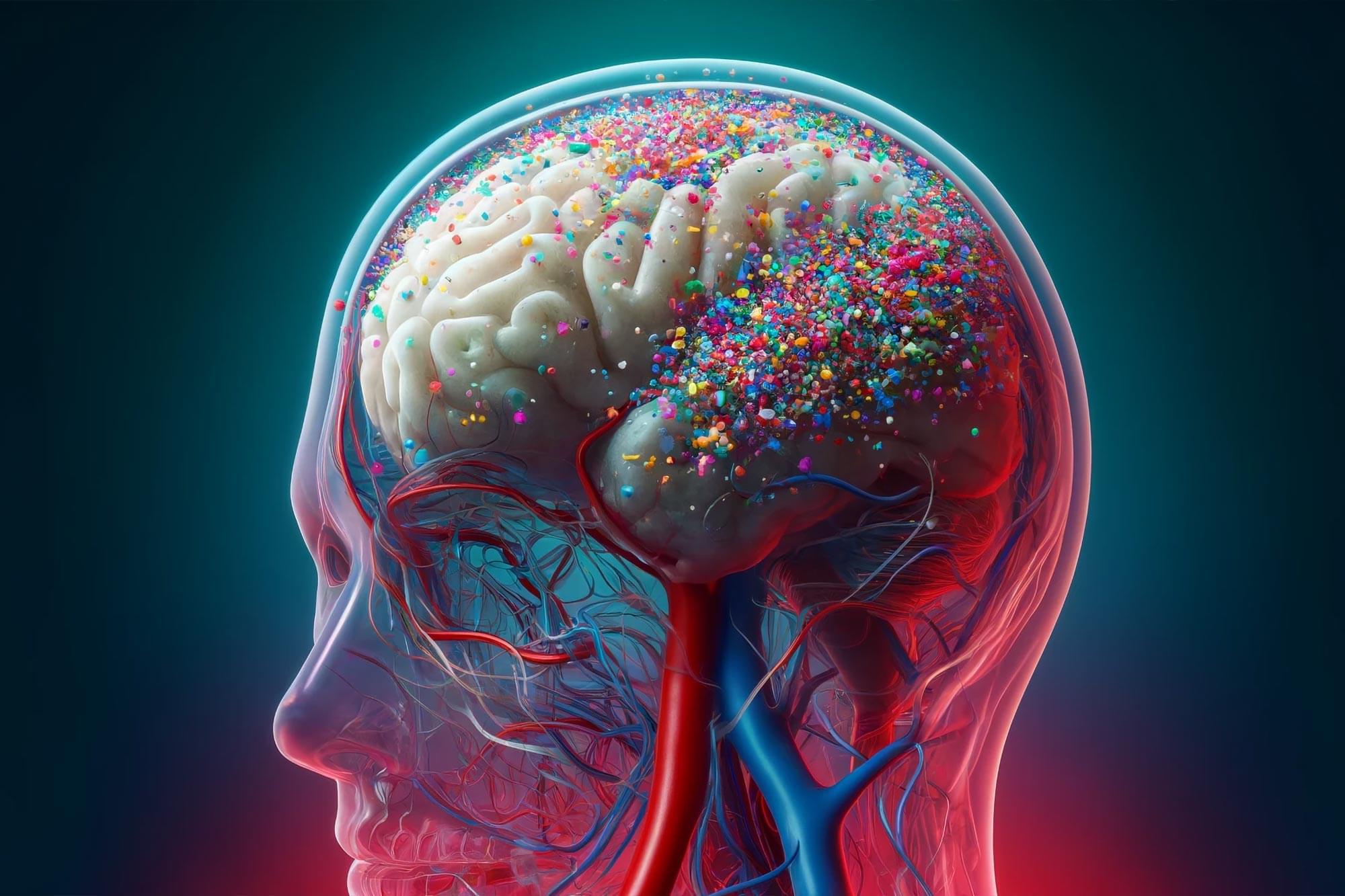
The brain has higher concentrations of plastic particles compared to other organs, with increased levels found in dementia patients.
In a comprehensive commentary published in Brain Medicine, researchers highlight alarming new evidence of microplastic accumulation in human brain tissue, offering critical insights into potential health implications and prevention strategies. This commentary examines findings from a groundbreaking Nature Medicine article by Nihart et al. (2025) on the bioaccumulation of microplastics in the brains of deceased individuals.
The research reveals that human brains contain approximately a spoonful of microplastics and nanoplastics (MNPs), with levels three to five times higher in individuals with documented dementia diagnoses. Even more concerning, brain tissue exhibited MNP concentrations seven to thirty times higher than those found in other organs, such as the liver or kidneys.
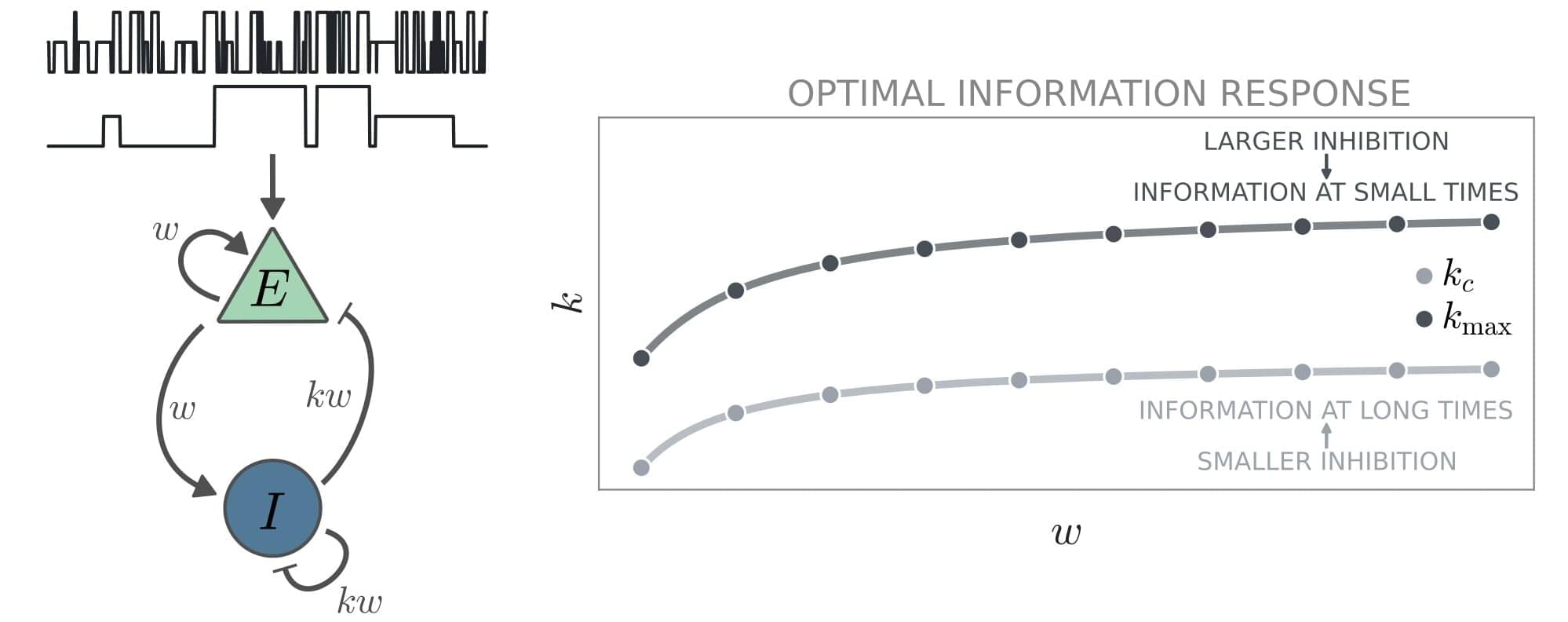
The brain’s ability to process information is known to be supported by intricate connections between different neuron populations. A key objective of neuroscience research has been to delineate the processes via which these connections influence information processing.
Researchers at the University of Padova, the Max Planck Institute for the Physics of Complex Systems and École Polytechnique Fédérale de Lausanne recently carried out a study aimed at better understanding the contribution of excitatory and inhibitory neuron populations to the brain’s encoding of information. Their findings, published in Physical Review Letters, show that information processing is maximized when the activity of excitatory and inhibitory neurons is balanced.
“Our research was inspired by a fundamental question in neuroscience: how does the structure of the brain shape its ability to process information?” Giacomo Barzon, co-author of the paper, told Medical Xpress. “The brain continuously receives and integrates sensory inputs, and neurons do not act in isolation—they are part of complex, recurrent networks. One particularly intriguing feature of these networks is the balance between the activity of excitatory and inhibitory neurons, which has been observed across different brain regions.”
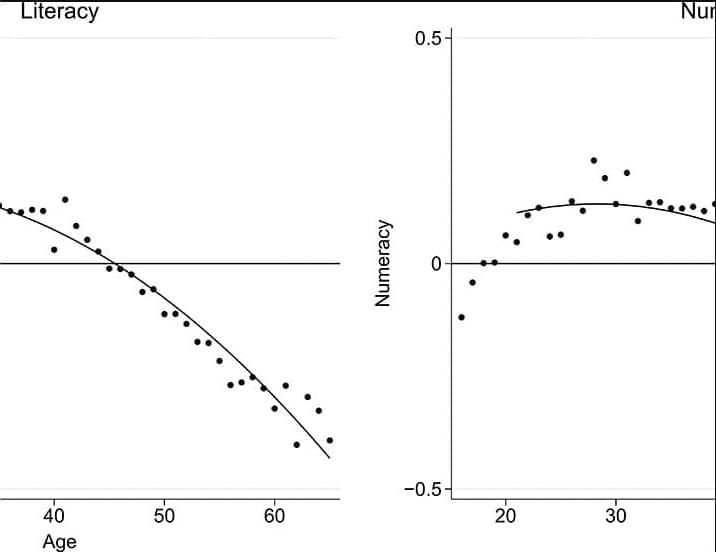
Regular use of math and reading skills could prevent cognitive decline with age, according to a new Science Advances study.
Cognitive skills of the population such as literacy and numeracy are important not only for individual incomes but also for the economic growth of nations (2–6). As a result, the aging of world populations presents an economic concern if the commonly assumed declines of these skills with age hold.
We use longitudinal variation in individual literacy and numeracy skills for a representative adult sample to create age-skill profiles that credibly separate age from cohort effects. The pure age component that we derive provides a different perspective on the impacts of aging populations. Overall, our results are not consistent with a view that a natural law dictates an inevitable decline in these skills with age. Potential cognitive declines only occur at later ages and are not inevitable with usage of skills.
This is consolation for countries with aging populations, but avoidance of skill losses is not automatic and appears related to stimulation from skill usage. These results thus suggest that age-skill relationships of adults deserve policy attention, consistent with concerns about the necessity of lifelong learning.

You may have noted that AI companions are an intriguing yet complex phenomenon in this modern age. This event has caused various psychological effects on the human mind, both beneficial and detrimental. With the rapid advancement of AI systems, including conversational interfaces, virtual personal assistants, and robotic companions, interactions with these technologies are increasingly influencing emotional well-being and social behavior. You must have watched the film “Her,” which highlights similar themes of companionship with an operating system.
Her follows Theodore, a lonely writer who develops a deep emotional connection with an AI assistant named Samantha. Unlike traditional AI, Samantha isn’t just a programmed voice—she learns, evolves, and expresses emotions, making Theodore feel truly seen and understood. Their relationship blurs the line between human and machine companionship, raising questions about whether AI can meet emotional needs the way real human relationships do. As Samantha grows beyond Theodore, the film explores what it means to love something that isn’t physically present and whether AI relationships can ever replace real human connection.
This article will explore the psychological effects of AI companions, their potential benefits, and the limitations of this technology.
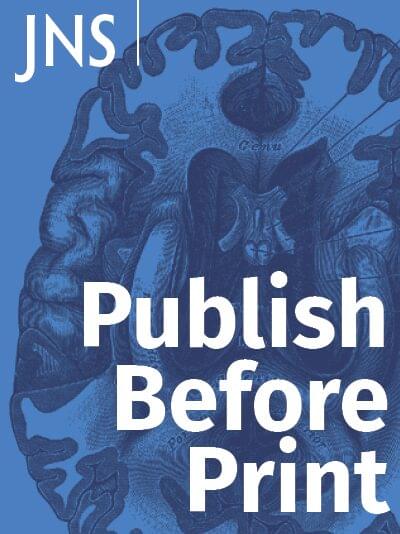
Radiologically, Chiari malformation type I (CM-I) is characterized by cerebellar tonsil herniation of at least 5 mm through the foramen magnum. In symptomatic cases, posterior fossa decompression (PFD) surgery is often performed and improves symptoms in approximately 75% of patients. However, the surgery involves risks, and identifying which candidates will benefit from surgery is important. It has previously been shown that the amount of tonsillar descent does not correlate with symptom severity or surgical outcomes. The authors hypothesized that using advanced neuroimaging methods to directly measure CSF flow and brain motion will give insights regarding which patients have the greatest likelihood of cerebral dynamic improvements from surgery.
Here, the authors evaluated 108 CM-I patients (age 19–70 years), 61 of whom underwent PFD surgery. The authors used phase-contrast MRI to measure CSF flow/stroke volume and cine displacement encoding with stimulated echoes (DENSE) imaging to measure brain motion, with a goal to predict postsurgical cerebral dynamic improvements from presurgical images.
The authors found that CSF stroke volume increased after PFD surgery by 28.9% (p = 0.014), brainstem motion decreased after surgery by 17.3% (p = 0.002), and cerebellum motion decreased 45.2% (p < 0.001). Notably, the amount of CSF flow increase after surgery had no relationship to tonsillar descent (R = 0.059, p = 0.767) but did relate to the amount of presurgical CSF flow (R = −0.518, p = 0.005). Likewise, improvements to brain motion were better predicted by the amount of presurgical motion (brainstem, R = −0.638, p < 0.001; cerebellum, R = −0.878, p < 0.001) than by tonsillar descent (brainstem, R = −0.312, p = 0.093; cerebellum, R = −0.620, p < 0.001).
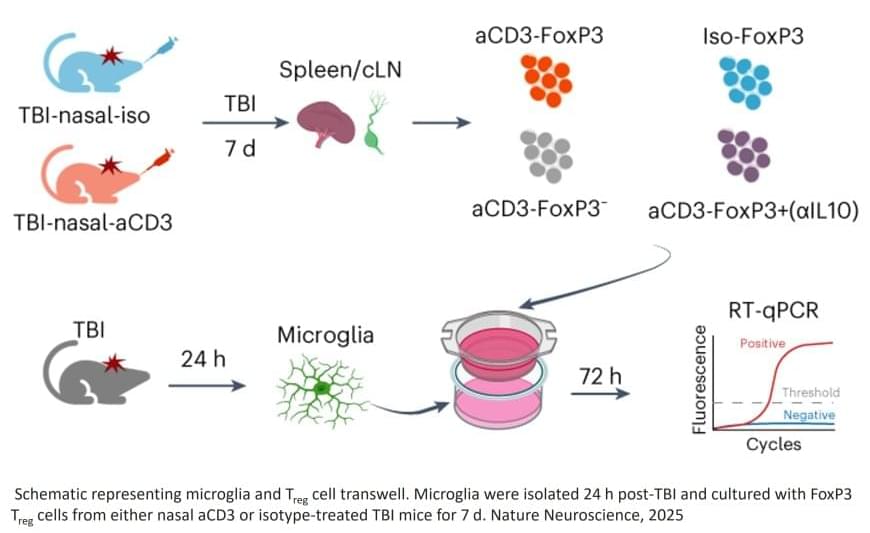
A new study suggests a nasal spray developed to target neuroinflammation could one day be an effective treatment for traumatic brain injury (TBI). By studying the effects of the nasal anti-CD3 in a mouse model of TBI, researchers found the spray could reduce damage to the central nervous system and behavioral deficits, suggesting a potential therapeutic approach for TBI and other acute forms of brain injury. The results are published in Nature Neuroscience.
The study examines the monoclonal antibody Foralumab, made by Tiziana, which has been tested in clinical trials for patients with multiple sclerosis, Alzheimer’s disease, and other conditions.
Multiple experiments were done in mouse models with moderate-to-severe traumatic brain injury to explore the communication between regulatory cells induced by the nasal treatment and the microglial immune cells in the brain. Over time, researchers were able to identify how they modulate immune response.
In addition to assessing the effects of the treatment, the research team was able to learn about immune response over time and compare the immune responses and effects of TBI in the mice.
The next step in the research is to translate the findings from preclinical models to human patients.